Products may come and go, but the need for marketing is something that’s eternal. You may be employing cutting-edge technologies or using the best of research to create new products. But the reality is that you can only hope for returns when you have a robust product marketing strategy in place.
However, even though the concept of marketing itself may be immortal, marketing trends are constantly evolving. In order to successfully reap the benefits of product marketing, you need to be on top of your game. To do that, you need to be aware of the latest trends in marketing and what people want.
For this post, I’ve teamed up with 51 experts in order to bring you some of their favorite product marketing strategies for 2018. But first, here are some of my personal favorites.
=====X=====
Disclosure: Please note that a few of the links in this article are actually affiliate links. This means that if you click on them, I will get a commission, without any extra cost to you. So, feel free to check these out as I only recommend products or services that I personally tested and highly recommend. For more information, please read my affiliate disclosure in my privacy policy.
=====X=====
Table of Contents
1. Personalizing the Customer Experience
No matter which industry or business you’re in, personalization goes a long way to improve the customer experience. This is undoubtedly, my favorite product marketing strategy for 2018.
The simplest thing you can do is to provide product suggestions similar to what customers have shown interest in. Whether you’re trying to look for shows on Netflix or products on Amazon, you must have come across such suggestions.
These serve to accomplish three important objectives. It indicates that you care about your customers and their preferences. It also shows that you’re trying to help them in the best way possible. And you’re also making sure that your products are being showcased to relevant audiences.
Essentially, you’re marketing your products without sounding pushy, spammy, or even needy.
2. Leveraging Instagram and Stories
The Instagram platform and the Insta Stories feature are re-defining the way brands look at marketing. If you’re not leveraging them yet, you’re missing out on some major opportunities. Instagram needs to be an integral part of your product marketing strategy if you’re truly serious about marketing.
The platform has been growing at an incredible pace and already has more than 800 million monthly active users. Instagram Stories, however, has turned out to be an even bigger surprise. Not only has it overtaken its predecessor Snapchat, but it also has over 300 million daily users right now.
Stories are a great way of engaging your audiences. With features like hashtags, location, polls, and stickers, you can make your products stand out. Also, if you have over 10,000 followers on Instagram, you can even link your Stories to your product pages. And, you can even run carousel ads on Instagram Stories now.
3. Collaborating with Influencers
Whenever I think I’ve spoken enough about influencer marketing, I’m pleasantly surprised to see that there’s still a lot more. Is influencer marketing the next big thing in product marketing right now? Well, it’s more like the current best thing, and it’s here to stay.
54% of women in a survey said that they’ve made purchases after seeing a product being endorsed by influencers. What’s even more interesting is that 63% of them have used a new product or brand based on an influencer's recommendations. Something that they might have not even considered otherwise. No wonder why it’s one of the fastest methods of acquiring customers.
So if you’re trying to implement a product marketing strategy that is bound to succeed, start leveraging influencer marketing now.
51 Product Marketing Strategies Shared by Experts
 #1. Eugene Levin – SEMrush
#1. Eugene Levin – SEMrush
In the past, it was very important to get to know your customer and use this knowledge to build a product that appeals to your users. These days it’s not enough.
Competition is getting tougher, and, to break through the noise, your message has to be deeply personalized and should be delivered at a perfect time.
When we were only setting up a product marketing strategy, we focused primarily on the technical and process-related aspects, such as the right planning process, cross-channel and cross-regional campaign execution and ROI tracking.
But once you have those fundamentals covered, your number one priority in your product marketing strategy is to define “how to build relationships with your customers and how to make them care about your product and brand.”
And what we discovered, in the end, is that the answer to these questions has much less to do with technology or process optimization, and is much more about the culture that encourages your marketing teams to be more creative and empathetic.
Check out these 51 product marketing strategies shared by experts that can help you boost your product marketing.
#2. Syed Balkhi – OptinMonster
Knowing your customer persona(s) is an often overlooked, but important component to better communicate with your target audience for product marketing. Once you know who you're talking to, everything comes together. You're able to write better blog posts and include the right keywords that bring your target market back to your site over and over again.
 #3. Brian Massey – Conversion Optimization Services
#3. Brian Massey – Conversion Optimization Services
Product marketing requires the team to understand the features that will entice people to want to learn more, and the words needed to persuade them to purchase or try the product.
Even if you want to talk about all of the features of your product, you have to list something first. And something last? Which will it be?
The best product marketers are data collectors. They understand that, in a digital world, data is cheap, easy to collect and doesn't require them to leave their desk.
They know how to build an MVNP (Maximuim Viable Non-Product) to test ideas and their ability to persuade online.
They know how to integrate online services offering user testing, eye-tracking and surveys into their campaign design.
They know how to present data to their organization to bolster their decisions.
And they use data to enhance their creativity and risk-taking. Because this is a creative job.
 #4. Dani Hart – GrowthHackers
#4. Dani Hart – GrowthHackers
The key components of a successful product marketing strategy in my mind boil down to the team living by one equation… Growth mindset + Empathy – Ego.
Growth mindset means that anyone in a product marketing role understands that there will always be a better way to provide value to customers, and it's their job to advocate for that across the company.
Empathy in this case means that product marketing, and other key stakeholders in the product all understand the customer and their needs first and foremost. They use this understanding to drive product decisions, navigate tough decisions, and gauge success.
Improving the team's ability to empathize with the customer will subsequently benefit the team in other ways, like understanding the motivations of others on the team and figure out better ways to work together internally.
Here's a 3-part series I worked on with Thibault Imbert (Head of Growth, Adobe) for how to build a customer empathy framework.
Dropping the ego is an important and often overlooked aspect of product marketing. There is no I in customer success. Decisions on product marketing need to be driven by the biggest opportunity to improve customer value based on clear patterns in data, not by proving one person's ideas are better than another's.
 #5. Brian Fanzo – iSocialFanz
#5. Brian Fanzo – iSocialFanz
Product marketing must move the conversation from what the product is or does to WHY the product was created and HOW the product will impact the consumer's life. 3/4 of Millennials would rather spend their money on an experience than on a product they desire.
This is a telling stat that should scare those in product marketing that are still broadcasting about the product features or creating ads that only talk about what the product is.
Product marketing must focus on the experience around the creation of the product and the experience the product creates for the consumer as that is what today's digital native consumer cares about.
 #6. Barry Feldman – Feldman Creative
#6. Barry Feldman – Feldman Creative
You need to intimately understand who your product is for and articulate how it addresses a pain point. All too often, product marketers are quick to fall into the feature trap when they have to understand if they are to connect with a prospect emotionally the conversation begins with a benefit. I always advise clients to develop a selling proposition for their product marketing by filling in the blank:
“How to _______________.”
You're forced to put a benefit in the blank. A feature won't make sense.
 #7. Yoav Vilner – Ranky
#7. Yoav Vilner – Ranky
Put massive amounts of time into competitor research for your product marketing. There must have been a similar product launch sometime, and they either succeeded or failed. Learn what they did right and where things went wrong, so you can increase your chances to succeed. Beyond that, targeting the precise buyer persona is mandatory, and being able to reach them requires the right marketing team.
 #8. Daniel Murphy – Drift
#8. Daniel Murphy – Drift
The most important component is figuring out where the market's need meets the product's strength. That's the intersection you want to focus for your product marketing.
For instance, at Drift we're focused on helping sales and marketing teams with conversations. Product marketing has turned into a crazy data-driven, lead scoring, conversion rate mess and lost sight of its core mission: having sales conversations.
More and more marketing teams are realizing they don't need another marketing automation system to send more spammy emails, they need ways to give their sales teams more conversations with potential customers. And our conversational platform does just that – helps businesses have more conversations. That's what the market needs and it's a strength of our product.
The second most important component is communicating that strength. Not just the message but the channel you use to communicate to each customer. And also, when you communicate it.
Luckily we use our own product to help with that communication. But we also use channels like video. It's so important for product marketers to find the channel where their audience is consuming content: video, webinars, blog posts, graphics, etc. For us, video is huge.
 #9. David Brier – DBD International
#9. David Brier – DBD International
Branding is the art of differentiation. So, first and foremost, you have to assess the Noise Level of the product category space.
From there, you learn 2 things: 1) How noisy is the space? (so you can determine the correct estimation of what it's going to take to get heard), and 2) What is everyone else doing so we can find our true point of differentiation?
These discoveries then get applied to everything from Brand Story to Brand Voice and Design. And stay focused on that as that, properly analyzed, will result in a voice that is uniquely yours, rather than trying to be everything to everybody (which results in a diluted mess that means nothing to nobody).
Then, keep refining that message, crystallizing the design, the message, the look and feel, and trimming all fat and extraneous tidbits. This results in clarity and a unified message. You want to delete every bit of digital cellulite from the equation so your brand becomes a lean, mean, branding machine.
 #10. Tamir Jerby – Lemonade
#10. Tamir Jerby – Lemonade
I think that before anything, the most important thing in your product marketing strategy is understanding that a good growth strategy utilizes every part of the company, from content and design, to product, customer support, sales, and the engineering teams. Executing a growth strategy without full cooperation from these teams is doomed to fail. Growth is a company’s mission; it’s the focus of all teams and not just the growth team.
When starting to work on a strategy, make sure your product is ready. Having an MVP (minimum viable product) is not enough; users today won’t forgive unappealing UX and bugs, they want something that will excite them.
At Lemonade, we call it MWP (minimum Wowable product). You want to get the WOW effect from your users when they use your product for the first time- you want them to share it with their friends and family, tweet about it, and become brand ambassadors. So definitely invest the time in building something WOW.
Key components of a strong product marketing strategy will be knowing your users. Learn everything you can about them, after all, it is hard to market your product when you are blindfolded. You have to know the market you are in, understand the competitors and the industry, where the opportunities lie and where the threats are lurking.
Build your story and how to tell it, own your cross-channel and cross-device messaging, and be consistent. Keep testing all the time, you may think your strongest value proposition is X but your users may find Y more appealing.
 #11 Aaron Agius – Louder Online
#11 Aaron Agius – Louder Online
It seems somewhat obvious, but the big one for me is: know your customer and how your product fulfills their needs. Don't just guess. Validate your assumptions.
So many people think they know what their customers want, but they haven't proven it with real data, numbers or insight. That's a recipe for wasted development effort and ad spend.
Once you're sure your product fits, everything else falls into place. The appropriate product marketing strategies become obvious (hint: focus on educating, rather than selling). The funnel stages you need to support become clear. Even the objections you'll need to overcome reveal themselves.
You won't get there without proper testing, yet I still see so many people dive into product development because they want to have a product to their name – not because they're fulfilling a need they've identified and chosen to support.
 #12. Leeyen Rogers – JotForm
#12. Leeyen Rogers – JotForm
There are several components of a successful product marketing strategy. First, know your customer. This means routinely segmenting your audience by industry, role, usage level, whatever metrics are relevant to your business.
Conduct market research to learn about their needs, pain points, and how they use your product. You can then apply this knowledge to your target audience to attract new users and shape the product towards your customers needs.
Second, fine-tune your company's messaging and positioning to reflect what problems your product can solve, making sure that it resonates with your target market. Customers see products and companies not with buzzwords in mind, but for what job they can do.
For example, I work at JotForm, an online form building platform. Customers do not typically come to us because they're looking for a form-building tool. Instead, they may need a way for their customers to select their custom order online and pay for it. Or, someone may need a way to sell tickets online.
Many products serve different purposes to different people, and it's the product marketer's job to gain insights about what those purposes are, and communicate the specific value to the person who would benefit from it.
 #13. Dennis Yu – BlitzMetrics
#13. Dennis Yu – BlitzMetrics
Successful product marketing strategies requires sequencing users through a WHY, HOW, and WHAT flow. Without this, you have random, irrelevant, interruptive, untargeted, and wasteful product marketing.
WHAT is what you're already doing to sell– based on price, features, special dates, testimonials, and other traditional marketing.
HOW is teaching what you know– especially what you'd do if there wasn't your product to solve it. Teach via simple recipes of 1,2,3 in how to get something done without talking about your product. Talk about wider industry issues. Interview experts.
WHY is how we bring all together– to get attention, establish authority, and have a meaningful first touch. Here you tell stories from the founder, users, and anyone else authoritative to your target audience. You want them to FEEL through one minute videos, so we can align on shared values.
Then remarket viewers of your WHY to your HOW content.
And remarket from HOW to WHAT content.
This is called the 3×3 grid, since you have 3 pieces of content in each phase of WHY, HOW, and WHAT.
Use the 3×3 strategy to have an evergreen product marketing funnel that will work for you timelessly and tirelessly– no need to keep producing expiring content.
 #14. David Arnoux – Growth Tribe
#14. David Arnoux – Growth Tribe
I'll share 3 short and sharp keys to a successful product marketing strategy.
The first one seems simple but it's so often overlooked. Identify and focus One Key Metric that is more important than any other metric at this point in time. We refer to this as the “One Metric That Matters” (coined by Alistair Croll).
Once you've identified this one key metric (whether it's lead generation, retention, revenue increase, customer acquisition or simply page views) the product marketing team must devise assumptions and experiments as to how to increase this metric. This follows the Pareto Principle where one metric will yield 80% of your bottom line results.
The second is the need for rapid experimentation. In the words of the almighty Jeff Bezos “Our success at Amazon is a function of how many experiments we do per year, per month, per week, per day…”
I believe a good product marketing team should be running anywhere between 5 to 20 quality experiments every sprint. The compound growth of these experiments will result in very large uplifts overall.
Third off is the importance of not sacrificing user experience in the pursuit of growth. Some teams become too successful at increasing metrics or optimizing conversions but fail to realize that these short terms micro-gains are hurting the longer term user experience.
To remedy this it is vital to collect qualitative feedback at all times and to always take user experience into consideration.
 #15. Aidan Hornsby – Flow
#15. Aidan Hornsby – Flow
This may sound cliche, but it's true: It all starts with your customers. Specifically, developing a deep understanding of what problem(s) your product actually solves for them. They care far more about how your shiny new dingus helps solve their problem than the fact that it exists and happens to be brand new.
When you understand that problem in your product marketing, and clearly articulate how you can help solve it, creating great messaging that actually resonates with the people you're trying to connect with is simple.
 #16. David M. Hobson – foundr
#16. David M. Hobson – foundr
In my experience, there are three key components of a successful product marketing strategy.
The first is RESEARCH & UNDERSTANDING. Really taking the time to understand your audience and customer avatar. Who they are, what their pain points are and so on.
It's always a mess to guess. Survey and validate where possible with pre-purchases. People respond very differently when they have money on the line.
Surveys and polls help you to test theories and get a feel for your audience, pre-sales and validation will prove to you if you are on the right track (or not).
Too many entrepreneurs get excited by their idea, rush out and want everyone else to be just as excited, but without the right research and understanding it can fall flat.
Sometimes it could just be that they have communicated it in a way that doesn't speak to their target customer.
The second key component is don't be attached to your idea. This is a huge mistake, closely linked to component number one (research and understanding). Funnily enough I tend to see it with more experienced and successful entrepreneurs.
They have learned to listen to their gut instinct and block out the “nay sayers”. But sometimes they are just plain wrong and don't want to hear about it. You have to be willing to ditch your idea and project if it's not landing with others. The more successful you are, the more “yes” men and women you will have around you.
If someone disagrees with your idea. Embrace it. Go deep. Ask yourself, “What if they are right?”
Three. Execution is everything. Don't spend too long on the battle plans, as soon as you have decided what to do. Set hard dates. Get accountable and ideally setup some Kanban sprints.
And the final, bonus component, comes from Robert Greene's “The 48 Laws of Power.”
“Accept the fact that nothing is certain and no law is fixed. The best way to protect yourself is to be as fluid and formless as water; never bet on stability or lasting order. Everything changes.”
Good luck!
 #17. Valentin Radu – Omniconvert
#17. Valentin Radu – Omniconvert
Understand who's your buyer persona
1. Sometimes it seems appealing to cover many angles and a broad target group, but is for sure toxic for your product, if it doesn't have enough awareness to start to all targets & all markets
2. Amplify the pain!
Your first job is not to brag about your features, or your solution. Your job is to emphasize how hard it is for your buyer persona to live with the pain you're solving – and only after that to talk about the solution you have to his problem.
3. Emotions > Data
Use as many data to generate emotions as you can to emphasize your product's points of difference – even if you play in the b2b space, humans are buying your product, not the companies.
4. Don't communicate unless you know this will surely make a difference in the news feed/ email inbox of your audience – in this times of short attention span, you really need to have an outstanding campaign to get noticed.
5. Make sure you are in sync with the sales team, if you are not doing account based marketing. Marketing, product and sales should work together to have a successful go-to market strategy
6. Be data-driven
Collect as much data as you can around events, engagement, channels, website experiments before and during the campaign.
 #18. Nichole Elizabeth DeMeré – nicholeelizabethdemere.com
#18. Nichole Elizabeth DeMeré – nicholeelizabethdemere.com
Product marketing strategies are at their greatest risk of going wrong from the very beginning – with accurately targeting the right customer who’ll give you product/market fit, and designing just the right value proposition to speak to them (with language-market fit).
That’s the foundation, and if you don’t target your ideal customers accurately and determine a genuine need of theirs that your product fills, no product marketing strategy in the world can save you. So before I’d look at the ‘ product marketing strategy,’ I’d make sure that foundation was solid – and based on voice-of-customer qualitative data that was gathered from actually speaking with ideal customers.
Those interviews give you the raw materials to get your value proposition right, get your advertising and web copy language right, and determine the best channels to reach them.
From there, you’ll get them in the door, but a truly successful product marketing strategy can’t stop at acquisition. The best, highest ROI strategies focus on retention, which requires a customer success component that comes in during (or even before) onboarding to deliver quick wins, and set the customer up to achieve their ideal outcomes down the road. That’s what activates viral, word-of-mouth growth, more than any outside incentive you can come up with.
 #19. Sue Dunlevie – Successful Blogging
#19. Sue Dunlevie – Successful Blogging
When you are blogging and want to market your offers, there are 3 steps to go through.
1) Be sure to have a goal for every blog post you write.
* Are you building your list for a launch?
* Are you building trust with your audience?
* Am I blogging about content on the subject of my offer?
2) Be sure to have a specific target audience.
By “spying” and doing research on your readers in Facebook groups, other social media and in competitor's blog comments, you can easily find out what they really want and need from you. Extra bonus – You'll also know exactly what to say in blog posts and sales copy after doing this “spying” research.
3) Be sure to solve a problem for your audience.
If you have done your research and discovered what your readers' problems are, it's much easier to both create your product offer and to market it. You'll also be able to describe the results they get from your offer, which is one of the best ways to make your offer irresistible to your audience.
By doing some research, thinking about your blog content and solving specific problems for your audience, you'll be able to successfully sell your product offers.
 #20. James Scherer – Wishpond
#20. James Scherer – Wishpond
Most marketers already know how important it is to create an ideal customer persona, but few take it any farther than the initial exercise and “this is what we think our customers want.”
Recently, our growth team, product/UX team and designers have gotten together to draft up website changes/optimizations as normal. Then, we have our COO come in (cold) to play the role of our ideal customer. If anything stands out or doesn't make any sense, their confusion informs our design, copy, and product development.
Role-playing as your customer allows businesses to get out of the echo chamber of product marketing.
 #21. Blaine Bertsch – Dryrun
#21. Blaine Bertsch – Dryrun
Know. Your. Customer. Not who you think your customer is, or who you want them to be, but who they are. It'll help you build a strong fit from where you can strengthen your credibility and authority. Do everything you can here to first discern and define who that person is, then work hard to imagine their persona fully. While this seems like a non-mission critical task, time invested on this project will net huge time and resource savings in every other part of your business.
Get really (really!) good at telling your story. Telling your story in a compelling and authentic way connects the ‘what' that you're selling with the ‘why' in a very authentic way, opening the doors to great customer relationships throughout their journey, brand advocates and great ROI.
 #22. John Paul Aguiar – John Paul Aguiar
#22. John Paul Aguiar – John Paul Aguiar
For me, a successful product marketing strategy should start at least 30 – 60 days BEFORE your product is ready to launch.
You want to first know WHO you perfect audience is, who needs your product and why.
Next you want to find WHERE you audience spends their time online, social platforms, forums, Facebook, LinkedIn groups etc…
Once you know where they spend their time, you want to BE THERE too, connecting and interacting and answering questions around what you product will be and what problems it will help fix.
Now you want to have a strong story, why did you create your product, who did it help you and others.
You want to get people to relate to you and how your product helped you and that it WILL help them.
Once you have all that figured out you will want to start building your product launch or notification list.
Create a free ebook or short video series that is targeted to what your product will be and start getting people to opt in for your free gift and to be notified of your launch date.
If done correctly for 30 to 60 days prior to your launch you will have a nice sized audience that will ready to jump on your product on launch day.
Bonus Tip: I used Facebook and Twitter live sessions for my Twitter product launch during December, I jumped on every 2 – 3 days to just do Q and A sessions to answer any questions that had to do with what my product was going to be about.
This worked really well to build my launch list but it also worked well to keep my product and launch date in front of people a few times each week leading up to launch.
 #23. Jonathan Long – blerrp
#23. Jonathan Long – blerrp
The most effective product marketing strategy is a well thought out product funnel. You need to make sure you have visually appealing images or video to pull interest, as well as a strong headline that makes the consumer stop and give your offer two seconds of their attention.
Then, you need to figure out how to effectively show them why your product is the superior choice (social proof works well), causing them to pull the trigger and purchase or at the very least, drop their email address to claim a special offer or more information, allowing you to market to them in the future until they convert.
 #24. Tracy Hazzard – Hazz Design
#24. Tracy Hazzard – Hazz Design
The most essential component to igniting a successful product launch needs to start well before you write any copy or begin any product marketing strategies.
Prove It First – You need to prove you have an original, highly desirable product. By highly desirable, I mean specifically by your targeted audience or the audience you already know you can reach. A/B test this! This shouldn't be your opinion or the opinion of your friends and family. This seems obvious, but because this is the hard part, too often it gets skipped for the convenient, available solution. The original or differentiating features need to be obvious AND of value to the target audience. Bells and whistles are just added cost if no one really wants them. More is not more and doesn't yield more. The most successful products sell themselves!
 #25. Erik Emanuelli – No Passive Income
#25. Erik Emanuelli – No Passive Income
These are my key components for a successful product marketing strategy:
1) Understand your audience and your potential customers. The more you know about them, the better you can create a product that they will find valuable.
2) Discover what is the added value your product can offer to your customers.
3) Showcase how you can actually help your audience. What problems can you solve? What are the needs you can satisfy?
 #26. Jeff Epstein – Ambassador
#26. Jeff Epstein – Ambassador
The key components of a successful product marketing strategy are focused around building a great relationship with your user or customer. Here are 4 critical elements to building a great relationship…
1) Engagement – there must be a two-way dialogue. Poor product marketing strategy just ‘talks at' the user, ideally, you should engage and build trust so you have a healthy two-way discussion.
2) Transparency – trust is built through transparency. Let the user know about the decision making process. Share mistakes, learnings and other information to both build trust and show that you are human..
3) Feedback – encourage feedback. Ensure that the user is heard. For most businesses, the user/customer is the reason why you (as a company) exist. Don't forget that. Ask for feedback and continue to iterate on the product to improve.
4) Empathy – step into the shoes of your user. Think about how they feel using your product or service? Is it making them look great at work? Understand their motivations and you'll be able to better communicate and engage them in the future.
Once you stop talking at the customer and start building a relationship with them, you'll see your product marketing strategies deliver value for both your users and your business!
 #27. Matt Janaway – MattJanaway.co.uk
#27. Matt Janaway – MattJanaway.co.uk
From a digital perspective, a successful product marketing strategy starts with matching customer intent – something that is all too often missed. In the traditional offline world, businesses fill gaps where a product is needed, whereas online, a clever product marketer will match something in the industry we call ‘search intent.'
This is a reverse marketing strategy and fundamentally a very simple tactic. Matching ‘search intent' allows businesses to fill gaps in the online market where internet users are already searching for something they need or want.
By creating new products that match this intent, businesses can significantly reduce the budget needed to promote their goods. This is because reverse marketing can help to do it for you. Before you launch a new product, go away and research the online market for your idea. You may just be surprised to find what new gaps you uncover, where you can cut through the market with very little effort!
 #28. Karola Karlson – Aggregate Blog
#28. Karola Karlson – Aggregate Blog
You can throw unlimited money into paid acquisition, but as far as it goes, you're not going to achieve exponential growth this way.
That's why, from the early days of your product development, you should consider various tactics for built-in virality. Your product being viral doesn't mean it has to get 1M users on the first week after launch. What it means is that every user that you bring to your product, will on average invite at least 0.1 more user via word-of-mouth. Even this small-scale virality will help your product grow to thousands of users.
This product marketing strategy also aligns well with the following suggestion: Make your product so good that people want to share it.
 #29. Mike McManus – Marketing Labs
#29. Mike McManus – Marketing Labs
When launching a new product in today’s saturated markets, understanding how ‘digital tactics’ can be used to the best effect is the most vital component to a successful product launch.
More than ever before, traditional marketers and the digital team are coming together to discuss how they can both equally play their important role in a new launch.
In some cases, where the business is digitally focused, traditional marketing tactics are being tossed aside in favor of smarter trackable techniques. Businesses are starting to see huge benefits in fusing off and online marketing tactics together to generate a buzz that cuts across all channels.
For example, the fusion of offline and online marketing techniques should be used in the fashion industry through the process of ‘soft launching’ new season clothing lines online months in advance.
This ensures when the season arrives, the product pages are ranking in Google searches – a simple but underused tactic. Another great example is ‘pre-orders.’ Offering the ability for your followers to pre-order goods before they are made requires deep forward planning and implementation, however, is a great tactic used by the likes of Amazon and Apple.
Next time you and your team are launching a new product, ask yourselves how can digital be used to your advantage? It’s these small questions that will be the difference between a triumph and a flop product launch.
 #30. Lisa Allocca – Red Javelin Communications
#30. Lisa Allocca – Red Javelin Communications
The key to great product marketing is to clearly understand the value your product brings to your targeted customer. Once you understand that, it must become the core tenet and take center stage during the entire go-to-market process including how a product is positioned, promoted, sold and supported.
 #31. Cody McLain – Supportninja
#31. Cody McLain – Supportninja
The key components of a successful product marketing strategy are:
1. Know who your customer is and what they care about
Whether they're Millennials or Gen-Z what they care about and what they prefer to spend their time (and money) doing has to intersect with your product in order for you to succeed.
2. Value proposition
Create a prototype that works and slowly tweak it based on how the market responds to what you offer. Flexibility during this phase will determine the future of the product; for instance, you may have envisaged that your product is for one function and find out that it's actually being used for something else by customers. Find your product's strongest use for a strong market-fit.
3. Demonstrate an understanding of market needs
Customers don't care whether your product is the best, they care about what your product can do for them — and whether this can be done quickly and optimally. You have to demonstrate this, which is amongst other things an understanding of what the market really needs. You don’t want to sell your product to people who don’t need it, so take the time to craft a story that will deeply resonate with people who can use it, because these people will end up being your biggest advocates (and affiliates).
4. A/B Testing via Social Media
This goes hand-in-hand with demonstrating an understanding of the market's needs. A/B Testing is a costly willingness to allow customers to dictate the future of your product. If you don't have concrete evidence about demographics, A/B Testing is an expensive (yet highly effective) way to get more information with some ROI.
5. Let the numbers decide
After A/B Testing, the results will determine the kind of product which actually ends up being launched and sold. Above all, your budget will dictate how well each phase of your marketing strategy goes. Typically, the more money you have and the more compelling your value proposition is, the greater your chances of being seen by a would-be customer.
 #32. Peter Sena II – Digital Surgeons
#32. Peter Sena II – Digital Surgeons
The key to launching a new product comes down to a number of tangible and intangibles.
Timing and brand/product experience is everything in this consumer-controlled rapidly changing business landscape.
Understanding what the needs and unmet / unarticulated needs of the customer are critical to any successful product launch. As an experience design company that partners with startups and Fortune 500 organizations to bring new products and ventures to market I often focus on what we call the “Final 4” which we make sure to really nail in all stages of the product concept development, validation, and launch phases.
Do we understand the audience?
Do we understand the market?
Do we have a compelling and differentiated value proposition?
Is the Business Model and customer experience tested and viable?
Understanding the audience and market comes down to getting open and leaning in to get to know your audience. Five act interviews, and hands-on qualitative design-led research are a great place to start. Tools like the business model canvas, journey mapping, and value-proposition canvases are very useful to getting to a successful launch.
 #33. Andrea Loubier – Mailbird
#33. Andrea Loubier – Mailbird
Knowing your audience, targeting your message and keeping consistency in your brand and ensuring it has a strong voice and is influential is one of the key component for a successful product marketing strategy.
 #34. Gil Allouche – metadata.io
#34. Gil Allouche – metadata.io
Product marketing is all about understanding the pains that your current and prospective customers are experiencing, so that you can build and sell a product or service that fulfills a need. So how do you get that understanding?
First, ask your customers and prospects! Next, mine your data for insights. With the predictive analytics tools and technology that are available to marketers today, it’s a straightforward process to spot buying patterns and trends in your data.
Once your product is in-market, test, test, and test your messaging again. Traditional A/B testing is dead – it’s just too slow and labor-intensive.
Savvy marketers are turning to next-generation demand gen platforms that use artificial intelligence and machine learning to orchestrate their campaigns and exponentially increase their offer and channel experimentation. This ensures that they are getting the right messages to the right people at the right time.
 #35. Steli Efti – Close.io
#35. Steli Efti – Close.io
A successful product marketing strategy should ideally be an extension of your product itself.
First, ask yourself: What is it that my product accomplishes for our customers? How does our product help our customers become more successful?
Once you have the answer, ask yourself: How can we create marketing that generates the same result, or at least a closely related result?
Let me tell you how we do this at our own company: Our CRM helps sales teams close more deals. We then asked ourselves: How can we create marketing that also helps sales teams close more deals?
For us, the answer was content marketing: we share actionable advice for salespeople. Whether you are a rep, a manager, or a VP of sales, you will find practical strategies and tactics you can use to close more deals and become better at your job in our content library.
Even if you don't use our product, Close.io can help you succeed as a sales person, because the content we share for free is so valuable and relevant to your own challenges and goals. This ultimately creates a lot of awareness and goodwill for our brand and product.
 #36. John Koetsier – johnkoetsier.com
#36. John Koetsier – johnkoetsier.com
Jeff Bezos was recently quoted as saying advertising was for products that aren't good enough to sell themselves. Sometimes I feel the same way about marketing.
Done right, marketing is a lot of effort. It takes multiple people, a great deal of time, and generally some cash. And too much of it happens for products that suck.
That said, it's a noisy world.
Even great products need promotion.
In my mind, one of the key steps to a successful product marketing happens well before launch, and even well before you have a product to sell.
I'm talking about building relationships with influential people who can help you spread the message in organic, natural, and inherently shareable ways.
Picking the right people and cultivating those relationships over the long term, doing favors for people so you've built up a bank account to withdraw from occasionally. That's an often overlooked method of initial marketing that can get a new product or service off to a running start with very little financial investment.
 #37. Shira E. Abel – Hunter & Bard
#37. Shira E. Abel – Hunter & Bard
One of the biggest keys in our product marketing strategy should be understanding the customer. We often look at things only from our eyes – but we need to be looking at everything through the customer's eyes. It's not about us. Talking to the customer, listening, and using their language is critical.
 #38. Ty Magnin – Appcues
#38. Ty Magnin – Appcues
The success of a product marketing strategy relies heavily on two things. Empathy for the customer and ability to influence internally.
Customer empathy requires a product marketer to not only listen to customers with their ego aside, but also to take action and solve problems for them. The best product marketing strategy gives room for content production, product feedback, and go-to-market changes that help customers along their journey.
The ability to influence internally requires a great deal of trust. Product Marketing must be seen as a leading voice within the company to align teams cross-functionally. People have to trust Product Marketing to see the big picture in order to buy into their vision, and they have to see that Product Marketing has can't only find problems, but help solve them.
 #39. Lindsey Anderson – Traffic and Leads
#39. Lindsey Anderson – Traffic and Leads
I have summed up the key components of a successful <online> product marketing strategy in my CLICK Technique. Check out the steps below:
C – Curiosity. Creating content that ignites curiosity in your potential customers is the first step to successful marketing. This includes images, stories and a personality that is shown through videos, blog posts and images.
L – Land. After the client is curious and navigate to your website, it is essential your website is mobile friendly, has pixels and analytics installed and looks professional.
I – Irresistible Offer. 99.9% of the folks that go to your website will not be ready to purchase. Don't let them slip through the cracks and develop an irresistible offer and snag their email address so you can build the relationship.
C – Cultivate. Continue building credibility through email marketing, bots and direct retargeting advertisements.
K – Keep Going. The hardest, yet most important portion, of an online marketing campaign is consistency. Consistently email, retarget and ensure that your potential clients continue to hear from you and your brand.
 #40. Patrick Campbell – ProfitWell
#40. Patrick Campbell – ProfitWell
To me, product marketing strategy really centers around understanding your target customer better than you ever have before; and I’m not talking about Grandpa HubSpot and Grandma Marketo’s buyer personas.
I’m talking about quantified personas where you know the most valued and least valued features of each persona, where those buyers frequent, and ultimately the willingness to pay of your buyers. With this data, all other aspects of product marketing are easy, because you’re making informed decisions and avoiding the guess and check.
 #41. Kristin Luck – Luck Collective
#41. Kristin Luck – Luck Collective
Research, and specifically marketing research, is THE key component to a successful product marketing strategy. Consumer sentiment and opinion research can ensure that you market products and services to your core target audience, enabling you to hone in on consumer fit versus wasting a lot of time chasing various scenarios.
Research to support a successful product marketing launch can include Awareness & Usage (A&U), Segmentation, Packaging and/or Pricing Testing as well as the use of syndicated data sources like Nielsen consumer panel or IRI data to monitor launch success and growth (and competitor growth!).
In a firm that doesn't have an internal insights departments or the expertise to run primary research surveys?
For time and cash strapped product launches, look online for free market sizing reports and check out free or low cost research platforms like SurveyMonkey and Zappistore. For a fraction of the cost of traditional market research Zappistore provides a marketplace of turnkey research solutions like concept or claims testing and ad testing that can help you green light the right ideas.
Have some money to spend? Consider using shopper insights firms, like Los Angeles based Alter Agents or insights and strategy consulting firm Kelton, who can hone in on consumer behaviors, allowing you to optimize marketing spend and focus on key customer segments that can deliver the greatest ROI.
 #42. Lukasz Zelezny – Zelezny.uk
#42. Lukasz Zelezny – Zelezny.uk
A lot of people think that there is a one-size-fits-all product marketing strategy that they can implement in order to promote their product. However, this isn’t true.
Every product is different, and this means that every product marketing strategy should differ as well. After all, you’ll be targeting a specific group of people, and should hopefully have specific goals that you want to accomplish. What I’m trying to say here is that there isn’t one set standard that you can copy.
What you want to do is analyze every part of your promotion. Think about the goals you want to achieve. Are they a revenue, brand awareness, traffic or something different. Then come up with some KPIs (key performance indicators) that you can track to see how well your campaign is performing.
With this information at hand, you can see how much traffic your product’s website is getting, how many sales you are receiving, how many people are talking about you on social media etc. If your campaign isn’t performing as you’d hoped, you can make changes. Make sure to analyze these again and see if the changes are beneficial.
Successful marketing is all about knowing what you want to achieve and trialing different strategies until you meet your goals.
1- Some digital marketers are saying ‘personalised experiences in real time’ are the next frontier when it comes to digital marketing. Do you agree? If so, how would that look like?
This is something that’s been around for a while, and I do think it’s going to be more important in the future. There are so many companies out there that offer the same thing that it’s vital to stand out. Personalising a customer’s experience in real time can help you to provide them with a more relevant experience. This helps them to feel special, appreciated, and like you understand who they are as a consumer, and could just land you the sale.
There are two main things that you can personalize: the content, and the message. Focusing on both of these will lead to the best results.
2 – According to you, what’s the number one mistake SME’s make with their digital marketing?
The main mistake that I see happening is SMEs trying to target too large of an audience segment or an audience that doesn’t fit their product. It is vital to have a clear understanding of your market and who your customer is, as this will affect everything that you do, from your website design, to how you talk to people on social media. When you know who your customer is, you can alter your marketing to reflect them and grab their attention. You can create special offers that are designed to attract them, and you can create a brand persona that appeals. The SMEs who fail to take this into account, usually get left behind.
3- According to a new study by PrizeOlogy, 71% of customers in the UK ignore the regulations regarding influencer marketing (e.g. they have to make a statement when they’re being paid to talk about something). Do you think platforms like YouTube and Instagram should take measures to educate their users on such regulations?
I follow a lot of accounts on YouTube and Instagram and I think a lot of people are aware of influencer marketing nowadays. In fact, I’ve seen plenty of influencer marketing posts that haven’t included the #ad hashtag that have been called out by followers and subscribers. Of course, some ads are more blatant than others too. I’m not sure whether it would be a good idea to educate the people who use these platforms, as it may cause problems for the platforms themselves and those who abide by the rules. Instead, I think governments should come up with a better way to crack down on the regulations they have in place.
4 – Thanks to a study by livestream.com, we now know that 80% of users would rather see a video than read a blog post. Does this mean that blogs are going to become obsolete in the near future? Or is there still a place for them?
I don’t think blogs will ever die. While a lot of users may prefer to watch a video rather than read a blog post, there are plenty of occasions when this just isn’t possible – at work for example, or when commuting. In these situations, reading is the better form of media. You also have 20% of people who would rather read content than watch a video. Plus, in order for a video to rank in the search engines, it needs to have content surrounding it. My advice for bloggers is to do a mixture of content – this way you will keep everyone happy without alienating one segment.
5- Due to recent hacks at top companies, security and privacy are at the top of the consumer’s mind. As digital marketers, how do we deal with these fears?
There are a number of things we can do to protect our customers' security and privacy. First, I recommend using a password manager. A lot of marketers use the same passwords for multiple sites and this is putting your users’ security and privacy at risk. Second, we should encrypt our websites and stores, especially those that take customer payments. Encrypting devices is another important step, especially if you travel with your work devices a lot. Finally, we should also keep our software updated to lower the risk of hacks happening. Explain to consumers the steps that you take, and encourage them to do the same.
6 – Marketers that are not up-to-date with the latest trends risk being left behind. But with the speed current technology gets developed, how do we stay on top?
It’s luckily not as hard as it sounds. First of all, it’s important to follow the top blogs in the industry. Consider websites like QuickSprout, Search Engine Land, and Razor Social. You can sign up to their newsletters and read a daily digest on your commute.
Second, talk to your colleagues. Find out what they have heard and discuss your own news. You can also network with people on Twitter and LinkedIn. Another good idea is to make use of tools like Google Trends and Google Alerts. Use Trends to find out what people are publishing and searching for, and set up Alerts for relevant marketing keywords.
Finally, keep an eye on the big brands. They have the resources to pay people to stay up to date with the trends.
 #43. Guy Sheetrit – Over The Top SEO
#43. Guy Sheetrit – Over The Top SEO
Define clear and realistic goals, the more detailed the plan is, the better your overall results will be.
You should always be able to answer the following topics when building a productive and successful product marketing strategy:
Audience Awareness (Inside and Outside).
Targeted Market Knowledge.
Value of Products.
Customer / Seller Perspective.
Communication and Priorities.
Added Value to End Clients and Future Clients.
Once you have answers for the above topics you should have a super clear picture as to what to expect out of your campaign.
 #44. Kristopher B. Jones – LSEO.com
#44. Kristopher B. Jones – LSEO.com
These three product marketing strategies will help your product stand out and get people to fork over money to buy your product.
First, you need a compelling story. People don't buy what you do; they buy why you do it. So you need a compelling WHY you do what you do. Answer what problem you solve and how having the problem solved is going to make them feel.
Second, be wildly open to feedback. As a tech investor in over 25 companies there's one clear thing I have learned time and time again about building great companies – great companies are built by getting products in the hands of customers ASAP and listening overtly to feedback. What does the customer like? What do they hate? What would make the product better. Become religious about listening to product feedback and you'll build incredibly successful products over time.
Finally, build the ultimate customer avatar and leverage Facebook Audience Marketing and Re-Targeting to walk your customers through your sales funnel. Of course – depending on your type of product – you may want to consider Google AdWords (and Google Re-targeting), e-mail, mobile marketing, and other growth marketing hacks and strategies.
 #45. Ricardo Casas – Fahrenheit Marketing
#45. Ricardo Casas – Fahrenheit Marketing
Branding: Consumers are bombarded with options when shopping for a given product. A solid product marketing strategy, consistent across mediums is a good place to start. Make sure you look better and more polished than the neighbor on the shelf.
Credibility: Create a library of content and syndicate the same through social media channels. People don't have to read the material necessarily, but they need to see that it's there. If you have your brand plastered throughout the web, you will be remembered when the consumer comes to a moment of decision when looking at your product and the competitor's on the shelf.
Value: Everyone loves a deal. Make sure your product looks better, is more credible and is comparably priced with the competitors. Make it easy for the consumer.
 #46. Sylvia Ng – sylvia.ng
#46. Sylvia Ng – sylvia.ng
The most compelling product marketing strategy is to know your user, know your product, and connect the two.
At each stage of the customer experience, make sure you 1. highlight the product benefits, 2. are messaging something relevant to the user at that time and 3. guide the user to a call-to-action.
Deeply understand what problem the product solves for the user and why they should care. And remember: there is no average customer, always segment!
 #47. Solomon Thimothy – Clickx
#47. Solomon Thimothy – Clickx
A successful product marketing strategy includes several key components. You can break it down by mapping out your product lifecycle. Starting with the introduction stage, followed by the growth stage, mature stage, and the decline stage. Each stage includes many unique strategies to market a product that’s bound for success.
During the pre-launch and introduction stage, define your product’s goals and think about how to prepare your product for a successful launch. As you plan your product’s launch, it’s essential to think about the product’s messaging and to create a unique value proposition. Use data and research to understand the audiences and markets you’ll be targeting. It’s also just as important to do a competitor analysis to see how your product compares against what’s already on the market. Test every element of your product to ensure it’s usable and works to solve your potential customers’ challenges.
In the growth and mature stages, you’ll need to continuously communicate the messaging of the product through market channels that your audience is already on. Create multiple touch points with marketing strategies like social media, email marketing, webinars, and sharing content surrounding your product to your users. Consistently update the UI and UX of the product so it’s visually appealing and easy-to-use. Don’t forget to go back and fine-tune your competitor and market analysis, keeping it relevant to the current product marketplace.
In terms of the decline stage, the demand for your product will begin to decrease. Continue to market your product, allocate marketing expenses to your most successful product marketing strategies, and add new product features. Just because the initial hype around your product is over, doesn’t mean you get to sit back and relax, this is the time to work even harder to market a product that sells!
Overall, a well-thought-out product marketing strategy should reveal the value of your product and fulfill customer pain points. As the product ages and markets change, don’t forget to always test and optimize your strategy. By creating your product marketing strategy and using these stages as reference, you’re building a strong foundation for your product to start from.
 #48. Raffaele Gaito – RaffaeleGaito.com
#48. Raffaele Gaito – RaffaeleGaito.com
I strongly believe there are three main components of a successful product marketing strategy:
1. Know your market. Most startups/products fail because they don't know their market and they have no idea about things like competitors, market size, customers' needs, etc.
2. Focus on building trust, not selling. Please stop trying to sell in every Facebook post, newsletter, YouTube Video and blog post. The first thing to do is create relationships with your target audience and build trust.
3. Only trust the data. In business (and in marketing) there is no such thing as instinct. “Trust your gut” is bull**it unless you're Steve Jobs or Elon Musk. For ordinary entrepreneurs (like me and you), the best thing to do is: to trust the data!
 #49. Daniel Mcgaw – Effin Amazing
#49. Daniel Mcgaw – Effin Amazing
Marketing automation is one of the biggest keys in our product marketing strategy. We use tools like AutoPilot to help us not only send emails, but we can send texts, postcards and have pop-ups in the app to help our users understand what is going on.
We tend to look at product marketing as educating your products' personas on how to get value from the tool.
Yeah, we can all market our product to people, but when you focus on what value our products provide a specific persona, we don't even have to try and sell them, they just buy.
Marketers tend to forget we are speaking to humans who have emotions, needs and more important problems they need to solve. These problems are unique for each persona you have.
Want to know what persona just signed up for your site? Send them an email with 5 buttons to click which state which persona they are. Just like this one we made for Realthread, see email with multiple cta's for their role.
You would be surprised how many people actually click these buttons and tell us who they are. We then save this information in our marketing automation tool (autopilot) and then send more targeted messages to inform those users why the product is valuable for them. See how we do this in this awesome webinar we did with Autopilot.
By making sure we are understanding our users first we can better segment our value props and educate a customer into knowing our product is right for them.
 #50. Jesse van Doren – Brize
#50. Jesse van Doren – Brize
From helping to grow a client's business by 800%, I have learned the following things are essential for creating a successful product marketing strategy.
1. Experiment, experiment, experiment! By A/B testing you can clearly identify and get to know your audience, from there you can begin to look at using a cheap, scalable market to target your ideal customers like Facebook.
2. Use the power of personalization – By constantly personalizing and optimizing your campaigns, you can expect customer interaction to rise substantially in your product marketing strategy.
3. Once you have found the product marketing strategy that works for you, make sure to automate this process as far as you can. By implementing automation, your system will become much cheaper to run and much more quality leads will come to fruition.
 #51. Norm Bond – NORMBOND MARKETS
#51. Norm Bond – NORMBOND MARKETS
The most effective product marketing strategy is to know your target audience. Utilize content marketing. Build a sales funnel. Allow time for pre-launch, launch and post-launch tactics. Test your assumptions. Optimize based on results. Repeat.
=====X=====
Disclosure: Please note that a few of the links in this article are actually affiliate links. This means that if you click on them, I will get a commission, without any extra cost to you. So, feel free to check these out as I only recommend products or services that I personally tested and highly recommend. For more information, please read my affiliate disclosure in my privacy policy.

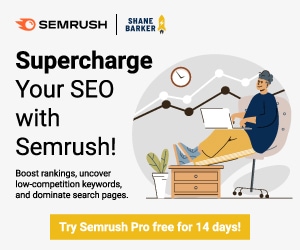
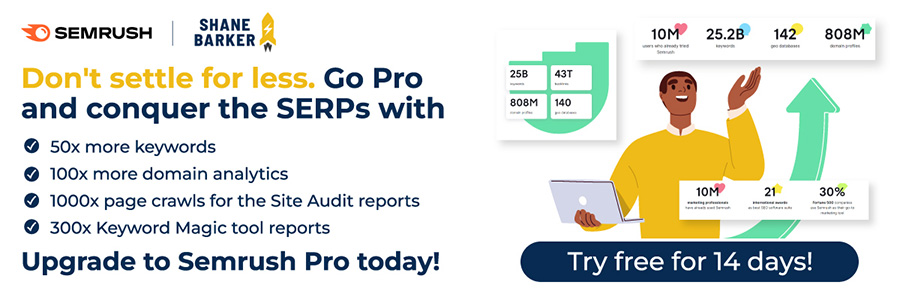























































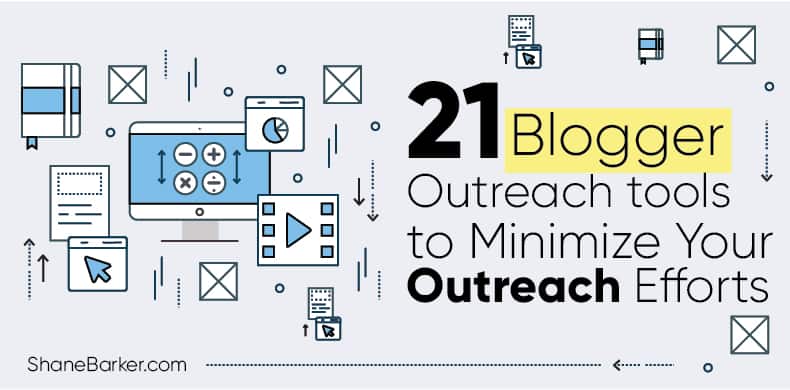

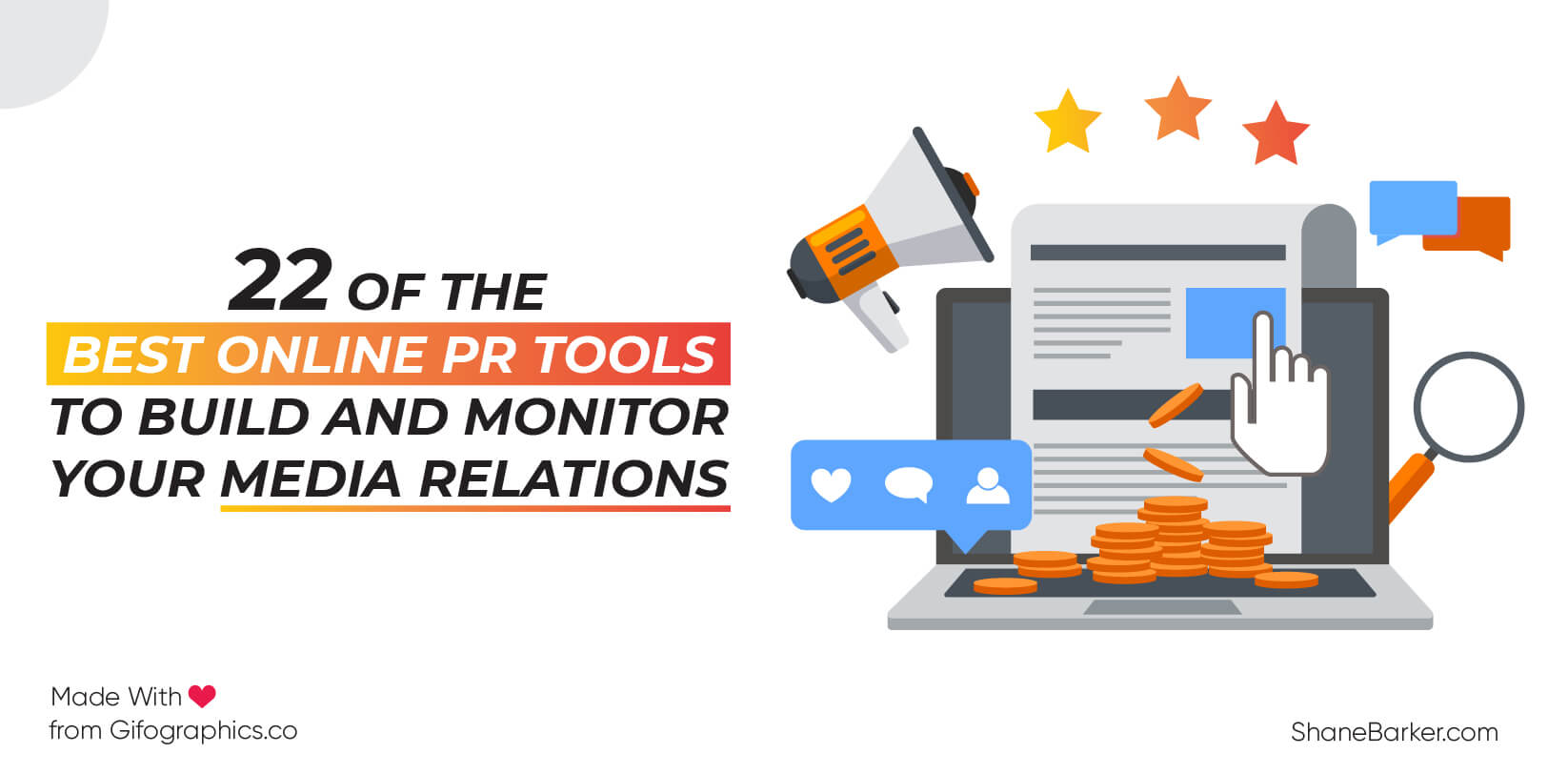
![digital marketing for startups: the strategies to use in [year] 113 best digital marketing strategies for startups](https://shanebarker.com/wp-content/uploads/2021/09/best-digital-marketing-strategies-for-startups.png)

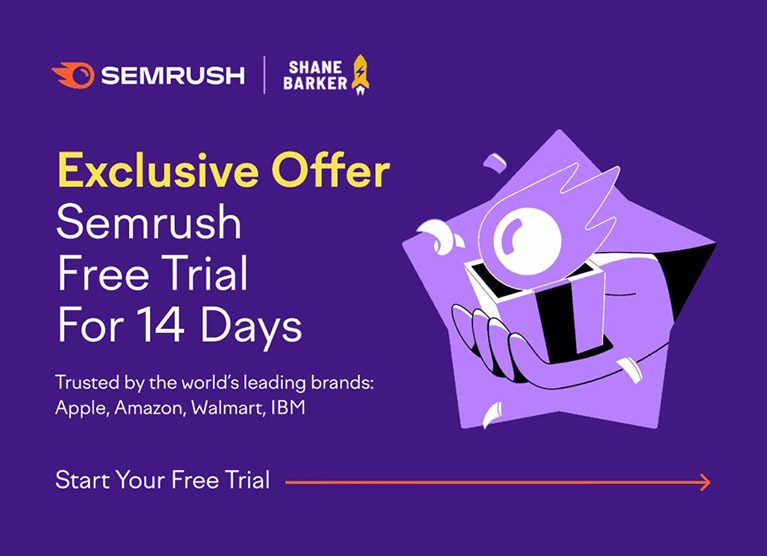



Epic post, Shane! Thanks so much for including me with these other esteemed friends and colleagues.
Sue
Hey Shane!
What an epic blog post with super valuable tips from these awesome experts!
You gotta have a marketing strategy if you want to grow your business and sell more products.
At the end of the day, it is all about truly caring about the consumer. You have to take great care of them and be strategical with how you market to them.
Thank you so much for putting this together!
Have a wonderful week! 😀
Really good work. I appreciate your presentation as well as the way you have discussed everything in brief. Keep writing such posts further and thanks for sharing such a wonderful conversation with us.
Interesting stuff, very helpful! Thank you.
That’s nice of you to say. I’m glad you liked my post about the product marketing strategy.
Hello, nice work. I really appreciate the information you are providing through your website, I have always found it helpful. Keep up the amazing work.
Hey Emma, that’s so nice of you to say. Thank you so much 🙂